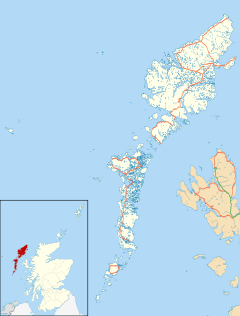Sollas facts for kids
Quick facts for kids Sollas
|
|
|---|---|
 Struan cottage. A traditional thatched cottage in Sollas, seen in 2002 and since restored. |
|
| Language | Scottish Gaelic English |
| OS grid reference | NF812747 |
| Civil parish | |
| Council area | |
| Lieutenancy area | |
| Country | Scotland |
| Sovereign state | United Kingdom |
| Post town | ISLE OF NORTH UIST |
| Postcode district | HS6 |
| Dialling code | 01876 |
| Police | Northern |
| Fire | Highlands and Islands |
| Ambulance | Scottish |
| EU Parliament | Scotland |
| UK Parliament |
|
| Scottish Parliament |
|
Sollas (Scottish Gaelic: Solas) is a small village on the northern coast of the island of North Uist, Scotland. It is known for its traditional way of life, called crofting, where people farm small plots of land.
Contents
History of Sollas
The Battle of Sollas: A Time of Change
The road in Sollas that goes towards Bayhead is called the Committee Road. It got its name because a special group, or committee, built it. This group was helping people during the Highland Potato Famine in the 1840s.
The Battle of Sollas happened in 1849. This was during a sad time in Scottish history called the Highland Clearances. During this time, many people were forced to leave their homes.
In 1849, a powerful landowner, Lord Macdonald, decided to make about 600 to 700 people leave Sollas. The people were already struggling because of a long potato famine. They received notices on May 15, 1849, telling them to leave. They asked for more time to sell their animals and belongings, but they got no answer.
Soon, many families were forced out of their houses. Their belongings were taken. It was already July, too late to travel to Canada. If they went, the cold winter would arrive before they could get ready. So, they decided to resist.
A sheriff and police officers came from Inverness to remove the people. As the workers started to pull down homes, the villagers began throwing stones. The workers had to hide behind the police. More stones and other objects were thrown. The police then moved forward in two groups. There were some small injuries on both sides. After this, the demolition work continued.
A historian named Alexander Mackenzie wrote about one event. An old woman used her stick to hit an officer, knocking off his hat. Two police officers then carried her away. Four men were later charged for resisting the officers. They were each sent to prison for four months. The next year, almost everyone else in the area was also made to leave.
The Battle of Sollas is part of a book called The False Men by Mhairead MacLeod.
Life in Sollas Today
Today, Sollas has a local supermarket. The old school building is now a community center called Taigh Sgire Sholais. Every July, the people of Sollas have a special week of events called Sollas Week. Sollas is in the area of North Uist, and most people living there are Protestant.
Sollas in Books
Sollas beach is shown in the book The Chessmen by Peter May.
Sollas Airfield
In February 1936, a company called Northern & Scottish Airways started flights to Sollas. They used the beach and a grassy area called the machair for landings. They even built two grass runways, a hangar for planes, and a fuel station. Flights continued until the 1950s.
Today, the beach at Tràigh Ear is still sometimes used by small planes. A company called Highland Aviation uses this beach for training pilots to land on beaches. They also use Traigh Mhòr beach at Barra, which is where Barra Airport is located.



